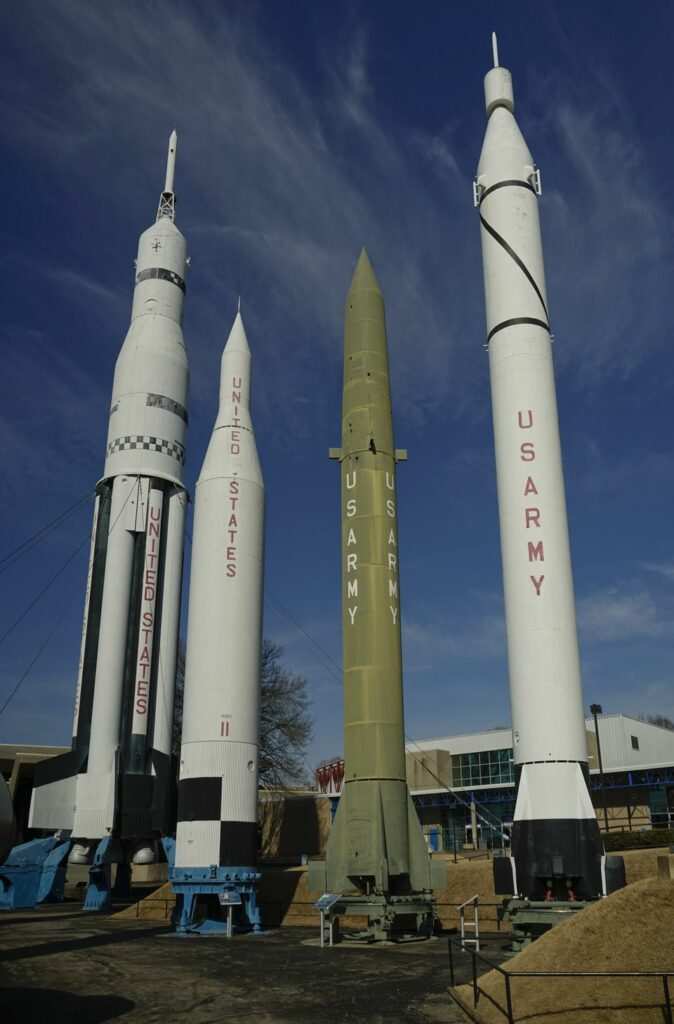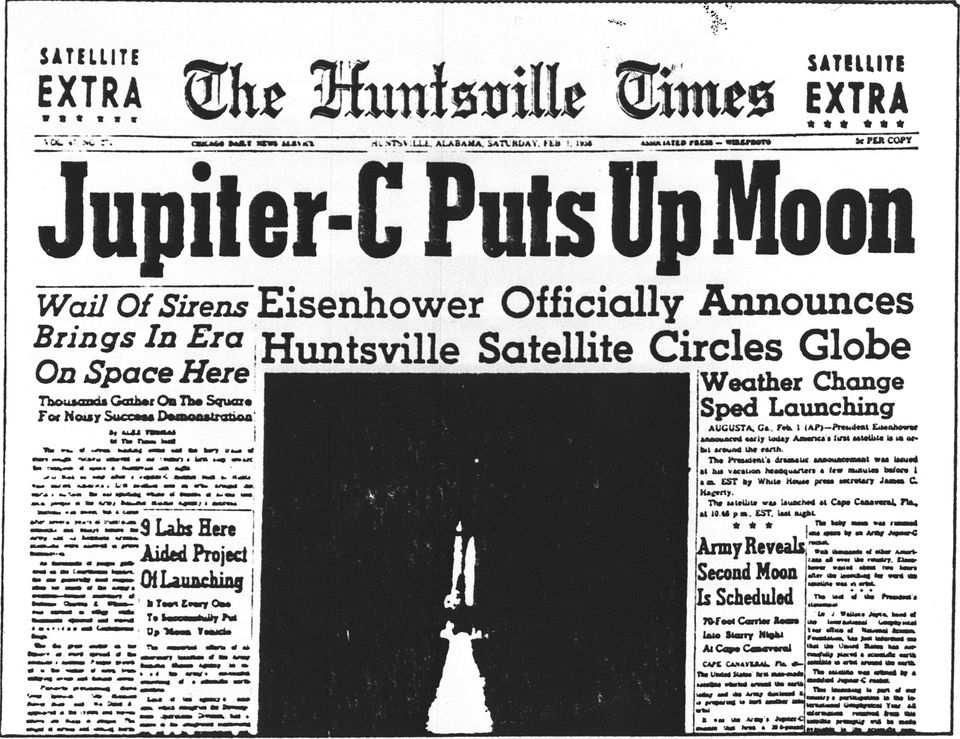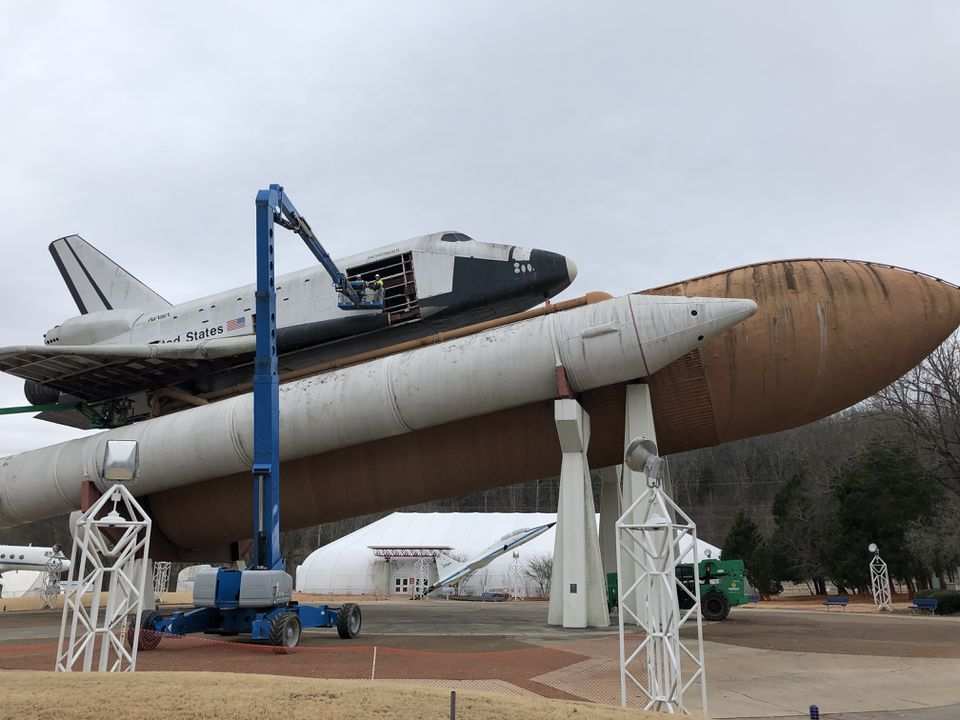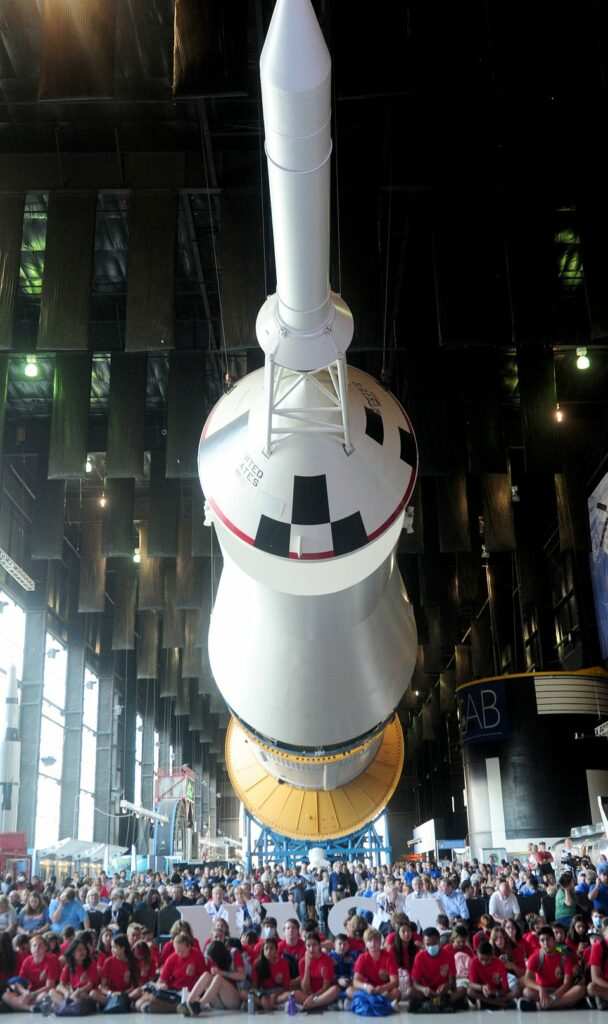From its beginning in 1960, engineers at Redstone Arsenal and Marshall Space Flight Center in Huntsville have led every major rocket propulsion development in American space, powering the launches of the first U.S. satellite, first astronaut in space, and first men to the moon.
And minutes after midnight, the center’s new rocket is set for its first test to propel a mission around the moon – Artemis 1. If successful, it could eventually take men, women and the first Black astronauts to the moon and eventually to Mars.

NASA has its expertise in solid and liquid propulsion and advanced propulsion such as solar sails at Marshall. The center also manages the Michoud Assembly Facility in New Orleans where rockets are assembled and, along with a test stand at Marshall, uses the Stennis Space Center in south Mississippi to test fire its engines.
But Huntsville’s rocket history predates NASA’s creation in July of 1958 and starts with the Army Jupiter C liquid-fueled rocket built under the leadership of Wernher von Braun’s team of German rocket engineers. It launched Explorer 1, America’s first satellite, Jan. 31, 1958.

The fuel that lifted the Jupiter C. Redstone booster was liquid oxygen and alcohol. After the first stage was modified, the rocket used a blend of propellants more powerful than the previous ethyl alcohol. That derivative called Hydyne was developed by a Rocketdyne team based in California and led by Mary Sherman Morgan, one of the early women pioneers in space flight.
Marshall was formed in Huntsville on July 1, 1960 and became NASA’s official propulsion center. Its Mercury-Redstone rocket powered by liquid oxygen and alcohol carried the first American astronaut, Alan Shepard, into space May 5, 1961.
After Shepard, the NASA Marshall team developed rockets and engines for the Saturn 1, Saturn 1B and Saturn V rockets. The Saturn 1 and 1B used refined kerosene and liquid oxygen as fuel. The Saturn V first stage also used kerosene and liquid oxygen for combustion. The second stage used liquid hydrogen and liquid oxygen as fuel.

Marshall developed the Saturn V’s F-1 engines from testing to flight and the second stage J-2 engines from concept to flight.
The Saturn V rockets took men to six moon landings on the Apollo missions.
The space shuttle era came after Saturn and Marshall led development of the Space Shuttle Main Engine (RS-25), the large orange liquid fuel tank, and the solid rocket boosters.

NASA upgraded the engine throughout the program and the shuttle engines are part of the thrust lifting Artemis today. The existence of a stockpile of RS-25s removed the need for a costly new engine development project and contributed significantly to Artemis’ design.
Today’s Artemis core stage uses about 730,000 gallons of chilled liquid hydrogen and oxygen to fuel its RS-25s. It is that fuel loading that has caused delays and issues for the first launch.
Artemis will also be lifted by Solid Rocket Boosters, one on each side, powered by ammonium perchlorate as an oxidizer and aluminum powder as fuel. Artemis is using upgraded versions.
The solid rocket boosters have no controls or shutoff switches. NASA veterans watch for their ignition on the launch pad. If the solid rocket boosters fire, the saying goes, “You’re going somewhere.”
Marshall isn’t stuck in the rocket engine past. NASA has designated it the lead enter for the agency’s green propulsion efforts to develop propellants less toxic or environmentally hazardous than propellants like hydrazine.
(Updated to correct the number of moon landings. There were six, not seven on Apollo 11,12,14,15,16 and 17)
___
© 2022 Advance Local Media LLC
Distributed by Tribune Content Agency, LLC.



